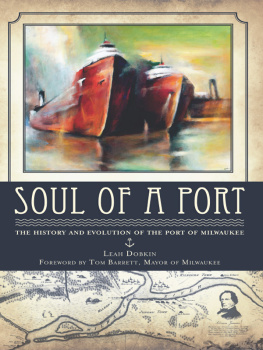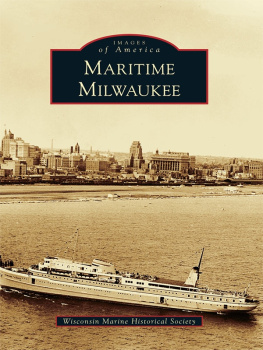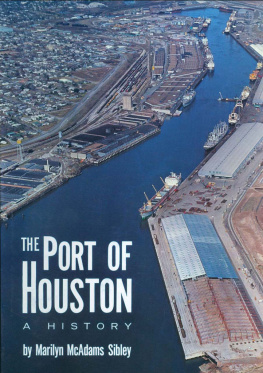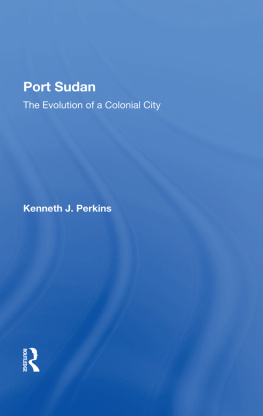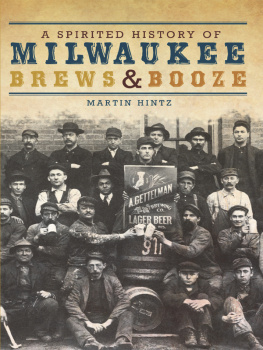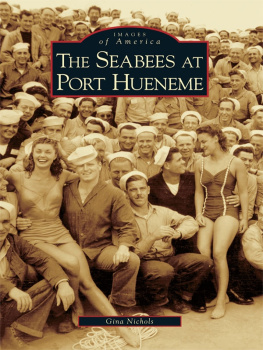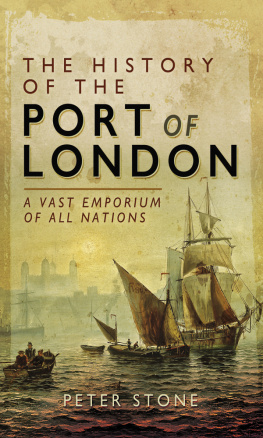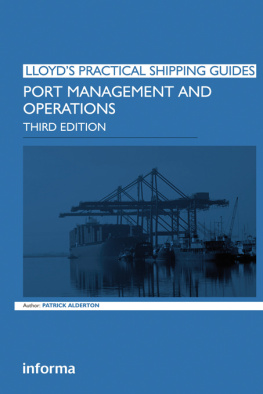

Port of Milwaukee
2323 South Lincoln
Memorial Drive
Milwaukee, WI, 53207
www.milwaukee.gov/port

Published by The History Press
Charleston, SC 29403
www.historypress.net
Copyright 2010 by Leah Dobkin
All rights reserved
Cover images: Front cover: Helmut Summ (American, 19081992), Jones Island Slip, 1971, oil on masonite, 25 x 32 in. (63.5 x 81.28 cm), Milwaukee Art Museum, gift of Mr. and Mrs. Harvey Hansen, Milwaukee M1973.3, photo by John R. Glembin.
First published 2010
e-book edition 2012
ISBN 978.1.61423.369.5
print edition ISBN 978.60949.081.2
Library of Congress CIP data applied for.
Notice: The information in this book is true and complete to the best of our knowledge. It is offered without guarantee on the part of the author or The History Press. The author and The History Press disclaim all liability in connection with the use of this book.
All rights reserved. No part of this book may be reproduced or transmitted in any form whatsoever without prior written permission from the publisher except in the case of brief quotations embodied in critical articles and reviews.
This book is dedicated to my father, William S. Dobkin, who taught me to discover the magic in people and places and whose love and encouragement inspired me to write.
CONTENTS
FOREWORD
For anyone interested in fully understanding our city, it is essential to know the Port of Milwaukee. No single institution can claim a more profound role in establishing this citys commerce and history.
The story of the port is one of innovation and adaptation weaved through personalities and events. It is a site of drama and success, sadness and humor. This book will inform and surprise, leaving the reader with a new appreciation for the port as a hub of activity.
With the arrival in 1835 of its first commercial cargo ship, Milwaukee started growingadding jobs, industry and opportunity. Our citys growth accelerated as a direct result of the ports links with markets all along the Great Lakes and markets around the world.
The port has added value to our economy by efficiently transporting raw materials, bulk goods and finished products. As a department of city government, the Port of Milwaukee operates much like a business by serving customers, managing its assets and generating revenue.
As times have changed, so has the port. Modern cargo is far different than it was in the middle of the nineteenth century. Furs and lumber once filled the holds of vessels along Milwaukees riverfront. High-value machinery or deicing salt is the type of cargo now moving through Milwaukees contemporary harbor.
The means by which the cargo moves has changed, too. Simple, wind-powered schooners were eventually replaced by steamships. Now, a truck, a train, a barge, a laker, an oceangoing ship, a high-speed passenger catamaran or any combination of those transportation methods moves goods through Milwaukees port.
One theme is consistent throughout the ports history: hardworking people have made Milwaukees commerce operate smoothly. With their muscles and their imagination, they are the heroes of the ports story.
Our city has been well served by the Port of Milwaukee. It is a part of our past, it is a part of our present and it is certainly a part of our future.
Mayor Tom Barrett
Milwaukee
PREFACE
We live three blocks from Lake Michigan, yet I found myself driving inland to Iowa to pick up a dilapidated twenty-five-foot sailboat that my husband Tim bought off eBay. Who knew that there were lakes large enough in Iowa to accommodate a twenty-five-foot sailboat, but there are.
The sailboat had tattered sails; strapped on the back was an old nine-horsepower outboard motor on its last propeller. Tim was determined to fix the boat and learn how to sail. He succeeded to convert a mold-covered and spider-infested vessel into a boat that I would sail on with only slight trepidation.
More than once we found ourselves in the inner harbor with no wind and an uncooperative motor, requiring the assistance of strangers to tow us back to our mooring. Caribbean-looking water and beautiful blue skies contrasted with our red faces.
One day, both the wind and motor died, but before the boat could be rescued (once again), it gravitated toward a mammoth dock, ultimately pounding against its pilings. The dock, as it turned out, was part of the commercial Port of Milwaukee, and that, my friends, is how I became curious about the port.
I wanted to learn more about the port, so I pitched a story idea about the port to Milwaukee Magazine and wrote a feature that was published in its February 2009 issue. I took an unconventional approach to researching the article. I hitchhiked on a 650-foot cargo ship through the Great Lakes to experience firsthand how the cargo arrived at the port; I even drove a 60- foot crane that was strong enough to lift an elephant.
My most special time was hanging out at the port, talking to the hardworking, colorful characters who help make the port run. They were from all walks of lifelongshoremen, crane operators, tugboat captains, the harbor master, pile drivers, the port director and a shipwreck hunter, to list just a few.
More than fifty people were interviewed, and I collected their stories and experiences and weaved them into the feature; ultimately, I expanded my research to create this book. I scoured hundreds of documents. Many of these documents are listed in the bibliography. Some were obscure newspaper articles almost one hundred years old, eviction notices given to Kaszub families living on Jones Island and other historical documents. Other, more modern documents were from tenants and their businesses and from port administrators.
All of the sources helped put the pieces of the puzzle together to answer five important questions: What really goes on at the port? What makes Milwaukees port special? How has the port adapted to changing times? Why is the port important to you and meand what is the ports future?
I am a Milwaukee County resident who happens to be an inquisitive person and a writer. I am not a historian, and this is not a history book about the Port of Milwaukee. Although it has some history, the book is more a collection of stories and information about the port, the people who work at the port and how the port has evolved over time.
The book can be read sequentially, from part to part, or you can select the parts that interest you. If you are a businessperson or government employee who wants to learn how a struggling government-run entity, such as the Port of Milwaukee, turned itself around by embracing business savvy, go to .
There is something for almost everyone, and you dont have to be from Milwaukee to enjoy the book. My favorite sections are the ones with the wonderful stories people told me about the port, often funny and sometimes tragic. Through these interviews, I not only obtained answers to my five burning questions, but I also learned about a whole new world that I did not know existed and had an impact on my daily life. I have gained a new appreciation for the effort that goes into how our buildings and roads are built and maintained, where our energy comes from and all the behind-the-scenes raw ingredients that make up our economy and promote our prosperity.
Next page
